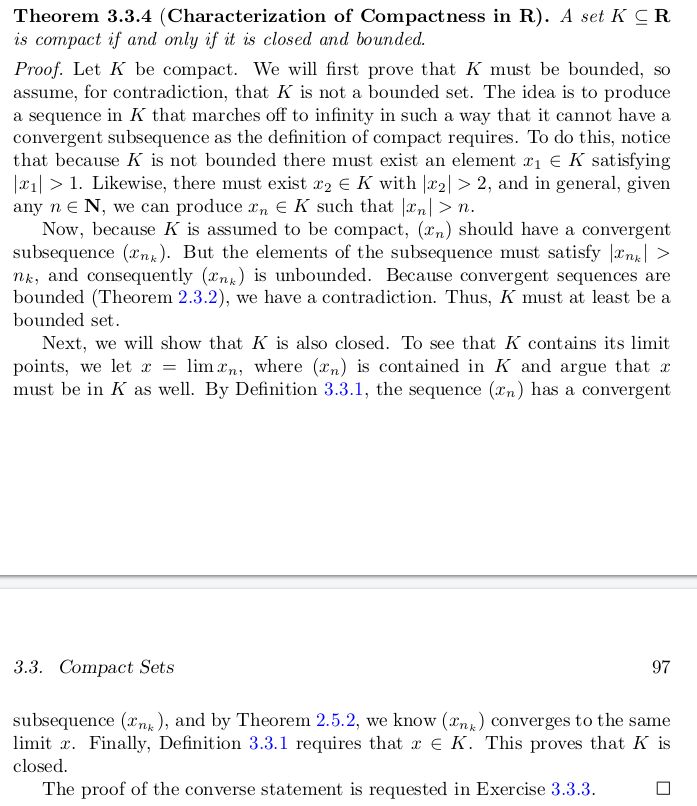Math and science::Analysis
Heine-Borel Theorem
Heine-Borel Theorem for \( \mathbb{R} \)
A set \( K \subset \mathbb{R} \) is compact iff it is closed and bounded.
If you have forgotten some of the formulations of compactness, here is a recap of one:
Compactness
A set \( K \subseteq \mathbb{R} \) is compact iff every sequence in \( K \) has a subsequence that converges to a limit that is also in \( K \).
Heine-Borel Theorem, proof
Below is a copy of Abbott's proof:

